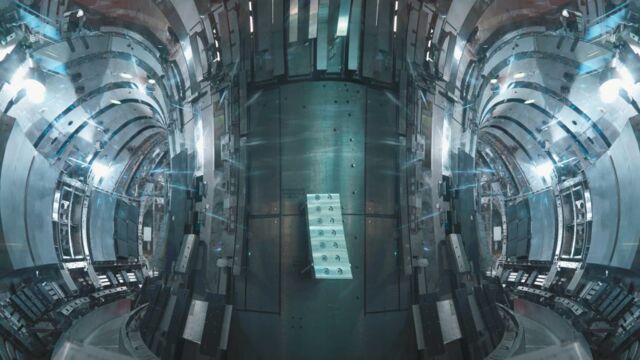China has managed to generate the ultimate sustainable energy

EAST is a fusion reactor in China, which can reach temperatures over six times hotter than the core of the sun. And it is the key to sustainable energy.
Imagine if we could replace fossil fuels with our very own stars. And no, we're not talking about solar energy, but actual nuclear fusion. Recent research is helping us get there. We are talking about the Experimental Advanced Superconducting Tokamak, or EAST. EAST is a fusion reactor based in Hefei, China.
Discover our latest podcast
Creating our own domesticated stars
The fusion reactor can now reach temperatures over six times hotter than the sun. Let's take a look at how it works. Fusion occurs when two light atoms combine into a single, heavier one, and releases energy. It sounds simple enough, but it's pretty hard to achieve. Why? Because these two atoms both have a positive charge. And just like opposing magnets, these positive atoms push against each other.
More under this adMore under this adThe stars, like our own sun, have a great way to counteract this force. Their massive size creates enormous pressure in their core, which forces the atoms to move closer to each other, making them more likely to collide. There's just one problem: that kind of insane pressure is not something we have the technology to recreate at the moment.
Luckily, there's another way. It's also possible to generate fusion reactions with extreme temperatures. And that's exactly what contraptions like EAST are designed to do. The higher the temperature, the faster the atoms move and the more likely they are to collide.
More under this adMore under this adBut it quickly becomes a balancing act. If the temperature is too high, the atoms move too fast and cross each other. If it's too cold, the atoms are not moving fast enough to fuse. So, the ideal temperature to engender fusion is around 100 million degrees Celsius. That's over six times hotter than the core of our sun.
Only a few fusion experiments in the world have gone beyond this stage. And the latest is that of the EAST. It resulted in nuclear fusion for about 10 seconds before stopping. Although it was a breakthrough for EAST, it is far from generating sustainable energy for us on Earth.
More under this adMore under this adA high investment, but for higher benefits
EAST is a tiny reactor only a few meters in diameter. It's not designed to be a full-fledged power plant. It's an experiment. And for now, its job is to help us design more efficient fusion technology that could one day power entire cities.
Just like the International Thermonuclear Experimental Reactor (ITER), the largest fusion energy project in the world to date. Thirty-five countries have invested billions of pounds in its construction. And it's designed to be the first fusion reactor to produce more fusion energy than the energy used for the initial heat.
More under this adMore under this adThese machines need a lot of energy to be able to function. The recent EAST test, for example, consumed more than 10 megawatts of power. That's enough to power over 1.500 British homes for a year. And EAST didn't produce even half that.
But it’s worth it. Why? First of all, because fusion reactors would produce nearly no radioactive waste compared to the type of reaction observed in current nuclear fission power plants. Fusion reactors can also run on seawater—an eminently renewable and sustainable resource.
More under this adMore under this adThe amount of water that sits within Lake Erie is enough to produce more energy than any fossil fuel on the planet combined. And unlike other energy sources, it doesn't require the sun to shine or the wind to blow. Just plain old human ingenuity
In a time of dwindling resources and worsening climate change, we could certainly use such a boon.